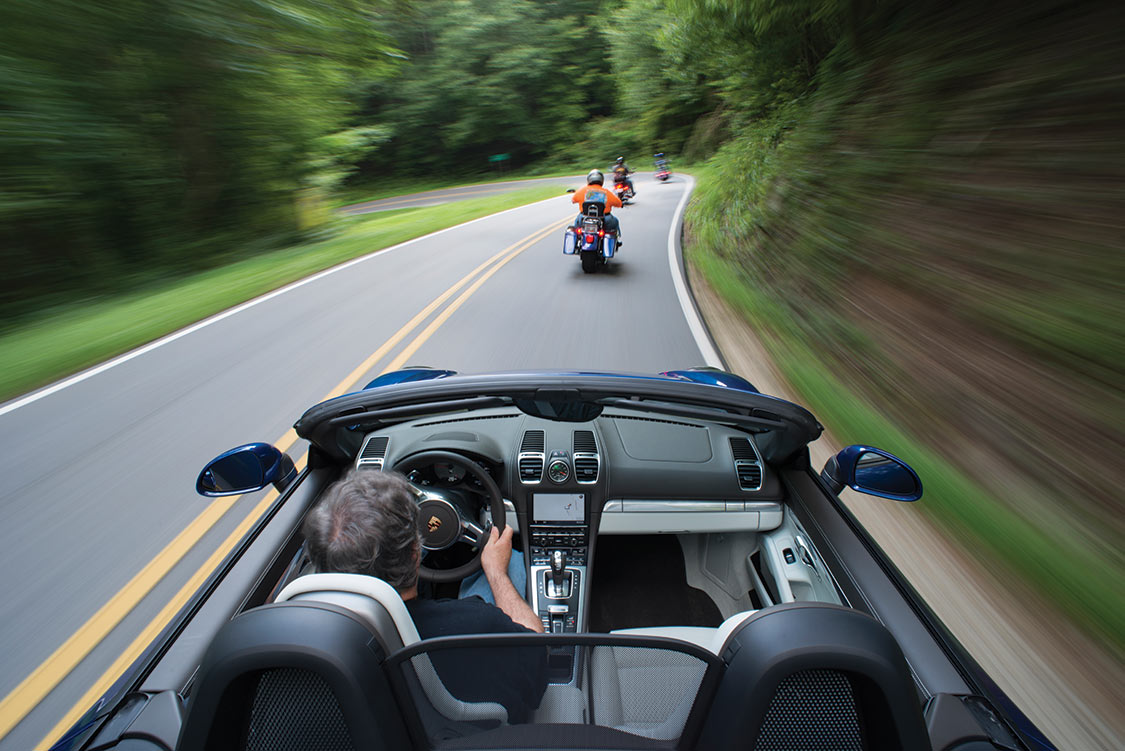 RANDY POBST
.
June 01, 2022
.
All Feature Vehicles
RANDY POBST
.
June 01, 2022
.
All Feature Vehicles

On that blessed day when I first got my driver’s license, and for the next 30 years of frustration after that, I lived in central Florida, the Land of Flat, Straight Roads. To feed my powerful craving for lateral g’s, I would venture 500 miles to the nearest mountain roads, the Appalachians of eastern Tennessee, western North Carolina and northern Georgia, in whatever I could get my desperate teenage hands on. This motley array included my big sister’s Renault R16, a 1967 Dodge van with a V-8 between the seats, slotted mags and dual exhausts, and even a girlfriend’s AMC Pacer.
I’ve been to the Tail of the Dragon—arguably the best driving road in the region—50 times since. Its 318 curves over 11 miles have lost none of their allure over the years, except for burgeoning summer weekend crowds and that universal safety Band-Aid, lower speed limits. To avoid the former, go on a weekday during spring, fall or even winter. It will be all yours. No tourists, no cops—a pavement playground paradise.

Formerly known as Deal’s Gap, this section of U.S. 129 is quite isolated, a good 20 miles from any human settlement and bordered by The Great Smoky Mountains National Park on one side and Alcoa Aluminum land on the other. A funky old hotel called The Crossroads of Time, and before that an Esso gas station and gift shop, clung to life for years on the North Carolina end, but since the Tail of the Dragon became more famous, it’s now Deal’s Gap Motorcycle Resort. But there’s a good reason for this because The Dragon is truly like the Disney World of winding mountain roads, attracting adventurers from all over the world. I’ve seen sweaty palms and shaky hands on those who are about to take it on. This strikes me as funny because as entertaining as it is, in essence, it’s a perfectly safe little road.
The Tail of the Dragon crosses the spine of an ancient mountain range on the Tennessee-North Carolina border. It overlays an old forest path, along which the Cherokee Indians were driven when they were “removed” and sent to Oklahoma. The road was developed along with the dams on nearby Little Tennessee River, but because of the tiny amount of traffic it handled, it was never straightened, flattened or civilized like so many others. So while the pavement is kept in excellent shape, the curves are raw. They do not make them like this anymore. Tight, relentless and seemingly endless, most of the Tail of the Dragon is run low in 2nd or 3rd gear, which keeps velocities reasonable.
To drive it well, approach the road relaxed and focused. After all, it is a public highway, not a racetrack. Keep your eyes up, crank your head in and watch the inside edge of the road, often through the side windows. Smoothly apply the power because your car will dig hard in the lower gears, and then watch and wait for the road to open up before you use much throttle. Treat that double yellow line like a concrete wall—don’t even touch it.
The rigorous onslaught can toast your brakes, so have mercy on your pedal pressure, but stay on them the whole time if the turn is getting tighter. Actually, be wary of all decreasing radius turns, for it’s here that The Dragon will bite you. Brake lightly into the curves to help your car turn in, and also to keep your lead foot from going to the gas too soon. Finally, be patient with your horsepower. Instead, feel the harmony of opposites: More steering equals less throttle; less steering equals more throttle.
In the final analysis, the Tail of the Dragon’s constant curves are more about the driver than the car, simply because they require such a commitment to focus and reading the road. It takes work, thought and desire, but when you get it right, the feeling is divine.
Randy Pobst is a 10-time National Sports Car Racing champion and currently drives in the Continental Sports Car Challenge.
We use cookies to enhance your browsing experience, serve personalized ads or content, and analyze our traffic. By clicking "Accept All", you consent to our use of cookies. Visit our Cookie Policy for more info.
Notifications
Share Link